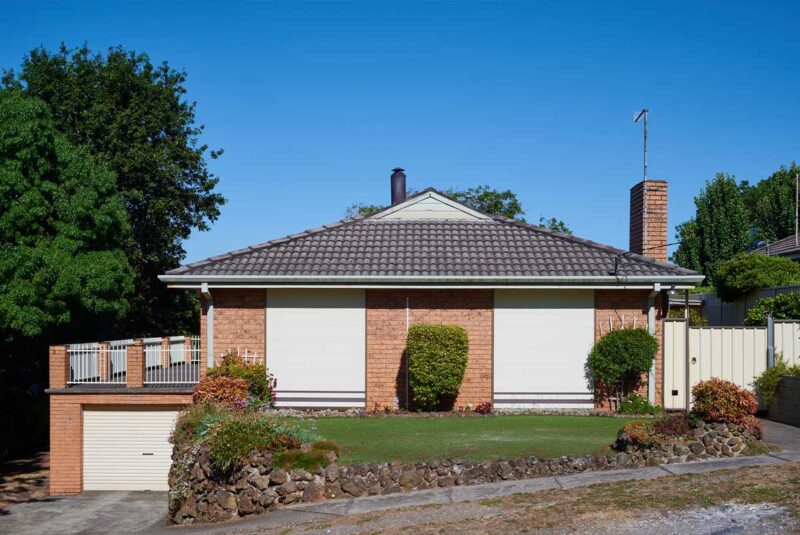Ready To Buy a Home?
Get Approved to Buy a Home
Rocket Mortgage® lets you get to house hunting sooner.
Not every homeowner starts with their dream home. Many Americans begin building equity with fixer-uppers. Other times, savvy investors might see the potential in a property after upgrades are made.
If you’re interested in financing upgrades to a property, a Fannie Mae HomeStyle® loan might be right for you. We’ll explain how the program works, eligibility requirements and what types of upgrades are allowed.
What Is a Fannie Mae HomeStyle® Renovation Loan?
Explore Your Mortgage Options
What are you looking to do?
The HomeStyle® Renovation loan is a mortgage that allows a borrower to either purchase a home or refinance an existing loan. The loan also includes funds to cover the cost of making repairs or upgrades.
Whether you’re looking to purchase a new home or make improvements to your current one, the HomeStyle® Renovation loan lets you roll the additional renovation costs into one loan.
How Does a HomeStyle® Renovation Mortgage Work?
The HomeStyle® Renovation loan is unique because the loan terms are determined by what the estimated property value will be after renovations are completed. This means there are some additional hurdles you’ll need to clear.
You’ll need to find a qualified contractor to do the repairs. Together, you’ll submit the renovation plans to your lender. But there’s a limit to the value of DIY repairs that can be done (more on that later). So even if you’re handy, you’ll need to find a professional.
An appraiser will review the plans and come up with an “as-completed” value for the home. This will be used to calculate the mortgage amount.[1]
Renovation funds
Once you close on the loan, your lender will place the funds earmarked for renovations in an escrow account. The contractor will need to submit plans to the bank for a “draw” to be paid.
Renovations must be completed within 12 months of the date when the mortgage is delivered.[2]
Who Can Qualify for a HomeStyle® Renovation Mortgage?
Fannie Mae was chartered by Congress back in 1938 to help the general public afford mortgages.[3] This specific program was designed to let Americans buy fixer-upper or starter homes and help them access the funds to make upgrades and build equity.
That said, there are some requirements borrowers must meet to be eligible for the loan.[2]
- Credit score: The minimum credit score is 620.
- Income limit: There are no income limits for this program.
- Debt-to-income (DTI) ratio: Your DTI ratio should not exceed 45%.
Down payment requirements
The minimum down payment you can make is 3% of the loan value.[2] Keep in mind that this includes both the cost of the property and the cost of any renovations.
Say you’re planning to buy a home for $300,000, and you want to make $50,000 worth of improvements. You’d need at least 3% of the total value ($350,000), which would be $10,500.
The down payment requirement increases if the property is a multifamily home or an investment property.
What property types are eligible?
By design, the HomeStyle® Renovation program is flexible, and many different property types are eligible, including:[2]
- 1- to 4-unit primary residences
- 1-unit second homes
- 1-unit investment properties
- Condos and planned unit developments
- Manufactured housing (but improvements are capped at 50% of as-completed value)
What Renovations Can Be Approved?
When it comes to repairs and renovations, this program gives the borrower a lot of leeway. Generally speaking, the improvements need to be permanently attached to the property and increase the home’s value. There’s no minimum required value for these renovations.[4]
That said, there are a few things you can’t do with a HomeStyle® Renovation loan. This includes:
- Tearing down an existing home
- Building a second home on a new property
- Making improvements that aren’t permanent (like buying a new bed)
Lender renovation oversight
Lenders are more involved with HomeStyle® Renovation loans, compared to other loan types, because of the ongoing work involved. This results in a few more requirements for the borrower.
For example, borrowers are required to have a construction contract with the contractor. Additionally, while borrowers can perform DIY repairs on 1-unit homes (so long as they plan to live there themselves), financing for these repairs can’t exceed 10% of the as-completed value. Inspections are also required for all work items that exceed $5,000.[2]
The reason for these extra steps is to ensure the work gets done and that the funds are actually being used to improve the home.
Should You Consider a HomeStyle® Renovation Mortgage?
It can be beneficial to weigh the pros and cons of the Homestyle® Renovation loan before deciding if it’s right for your situation. We’ve listed the main ones for you below.
PROS of a HomeStyle® loan👍
A HomeStyle® Renovation mortgage lets you finance home improvements without taking out an additional loan.
HomeStyle® loans come with lower interest rates than home equity lines of credit (HELOCs) or home equity loans, and they often rival the rates for conventional loans.
Multifamily homes, vacation homes and investment properties are all eligible for the program.
CONS of a HomeStyle® loan👎
The lender approval process is more involved, and there’s ongoing oversight to ensure the work is being completed. You’ll also need your contractor to submit renovation plans in order to be approved.
The DTI ratio and credit score requirements are higher than some other programs offered by Fannie Mae and Freddie Mac. Other options may be better for low-income borrowers.
Renovations must start within 30 days and be completed within 12 months of receiving the HomeStyle® loan.
HomeStyle® Renovation Mortgage Next Steps
Fannie Mae doesn’t offer loans directly to consumers. If you’re interested in a HomeStyle® Renovation loan, the first thing you’ll need to do is shop for mortgage lenders. Find out what lenders in your area offer HomeStyle® Renovation loans. Once you’ve spoken with a few lenders who offer the program, you’ll want to begin the preapproval process.
Get approved to buy a home.
Rocket Mortgage® lets you get to house hunting sooner.
Alternatives to a HomeStyle® Renovation Mortgage
If the HomeStyle® program isn’t right for you, there are other renovation mortgages available. Here are some you might want to consider:
- FHA 203(k) loan: Known as the “federal fixer-upper,” one reason to consider this loan is because you can use it to tear down existing structures.
- Home equity loans: These loans allow you to tap into the equity you’ve already built in your home.
- HELOC: Similar to a home equity loan, this allows you to access the equity in your home. However, you can borrow as needed, and you’ll only pay interest on what you actually borrow.
- Cash-out refinance: This replaces your current mortgage with a new loan, but you receive the difference in cash.
HomeStyle® Renovation Loan FAQs
It can be a good option because it allows you to finance renovations and either refinance your mortgage or purchase a new home all in one. They also offer competitive interest rates and can be used on a variety of property types.
HomeStyle® loans typically offer lower interest rates than what you’d see with a HELOC or home equity loan. Usually, they’re also competitive with the rates for conventional mortgages.
The loan follows Fannie Mae and Freddie Mac guidelines for conforming loans in 2023. For a single-family home, borrowers can take up to $726,200. This limit increases to $1,089,300 in high-cost metro areas.[5]
Upgrade Your Property With a HomeStyle® Renovation Loan
The HomeStyle® Renovation mortgage can be a great way to access funds to upgrade your property. Ideally, this will quickly add more equity to your home, making it worth more – even without an increase in market value.
The Short Version
- The HomeStyle® Renovation loan lets you finance upgrades to a home, whether you’re purchasing a new one or refinancing a mortgage for a home you already own
- You’ll need to work with a professional contractor to submit your renovation plans to your lender. An appraisal will be done to determine the value of the property after upgrades
- You have 12 months from when the mortgage is delivered to complete the upgrades[2]
Fannie Mae. “HomeStyle Renovation.” Retrieved March 2023 from https://singlefamily.fanniemae.com/originating-underwriting/mortgage-products/homestyle-renovation
Federal Deposit Insurance Corporation. “HomeStyle Renovation Mortgage.” Retrieved March 2023 from https://www.fdic.gov/resources/bankers/affordable-mortgage-lending-center/guide/part-1-docs/fannie-homestyle-renovation-mortgage.pdf
Federal Housing Finance Agency. “About Fannie Mae & Freddie Mac.” Retrieved March 2023 from https://www.fhfa.gov/about-fannie-mae-freddie-mac#
Fannie Mae. “B5-3.2-01, HomeStyle Renovation Mortgages (03/01/2023).” Retrieved March 2023 from https://selling-guide.fanniemae.com/Selling-Guide/Origination-thru-Closing/Subpart-B5-Unique-Eligibility-Underwriting-Considerations/Chapter-B5-3-Construction-and-Energy-Financing/Section-B5-3-2-HomeStyle-Renovation-Mortgage/1033003681/B5-3-2-01-HomeStyle-Renovation-Mortgages-06-01-2022.htm
Federal Housing Finance Agency. “FHFA Announces Conforming Loan Limit Values for 2023.” Retrieved March 2023 from https://www.fhfa.gov/Media/PublicAffairs/Pages/FHFA-Announces-Conforming-Loan-Limits-for-2023.aspx




